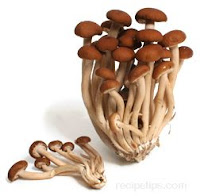There are 3 ways to obtain a perfect
growing medium. The first two are easy, the third method “make your
own” is much more complicated and is best used by those with room
both inside and outside to undertake the project
- The easiest way to get started is to purchase a kit. The kit will come with an inoculated growing medium. Just follow the instructions and wait.
- Purchase a prepared growing medium and inoculate the medium yourself. This may be the other way you are going to grow some of the more rare and exotic varieties.
- The third method is to make your own growing medium. This tends to be a large composting project and can only be used if you have the space and time available. When starting from scratch, sterilization and pasteurization are the most essential components in making a quality mushroom compost as the risk of contamination is the number one threat to a quality mushroom crop. Temperature and humidity also play an essential role. Because of the larger scope of this procedure, we will leave it out of this discussion and revisit it, in depth, at a later time.
What is a Growing Medium?
Mushrooms grow on decaying material,
called a substrate. The substrate must be thoroughly
sterilized for the mushrooms to grow properly. The growing medium
should be an organic material that features carbohydrates such as
sugar, lignin, cellulose or starch.
When you purchase a Mushroom growing
Kit, a sterile and balanced substrate will be included. Just
remember that once the growing period has ended, this substrate will
no longer be viable. You will have either buy another kit or buy a
substrate or a spawn bag to obtain another harvest.
Get growing medium
Again, there are some choices. You can
purchase a spawn bag. This will give you a sterile strata which you
can inoculate. Another option would be to create your own spawn bags.
General rules for Planting
Mushrooms.
Purchase mushroom spawn from a catalog
gardening seed company. Then, break up the spawn into pieces smaller
than golf balls and plant them in your growing medium so they are
about 8 inches apart and 2 inches deep. Check the room temperature to
ensure it remains about 70 degrees Fahrenheit for 21 days, and keep
the room dark. Then, drop the temperature to 60 degrees Fahrenheit
and cover the growing medium with potting soil. An ideal location for
growing mushrooms is in a cool, dark area such as a cellar or
basement or even the area under the kitchen
sink. Make sure the temperature does not drop to below 55
degrees Fahrenheit.Note: When your mushrooms begin growing, check to make sure they are white. If they look pink, they are infested with bacteria and should be thrown away.
Watering
Your mushroom planting soil should be moist but not excessively wet. Water your mushrooms using a gentle spray nozzle attached to a garden hose or with a water spray bottle. Getting your mushroom growing soil too moist can attract pests such as sow bugs as well as lead to mushroom plant diseases. Do not water the topsoil unless the soil feels powdery.











